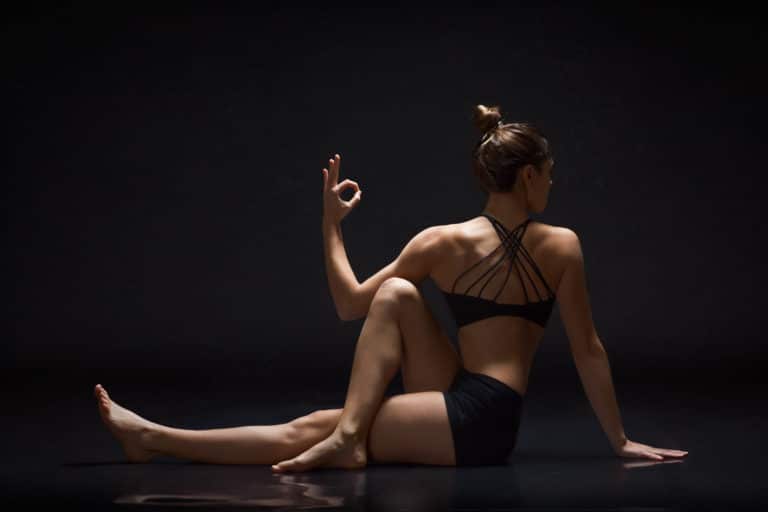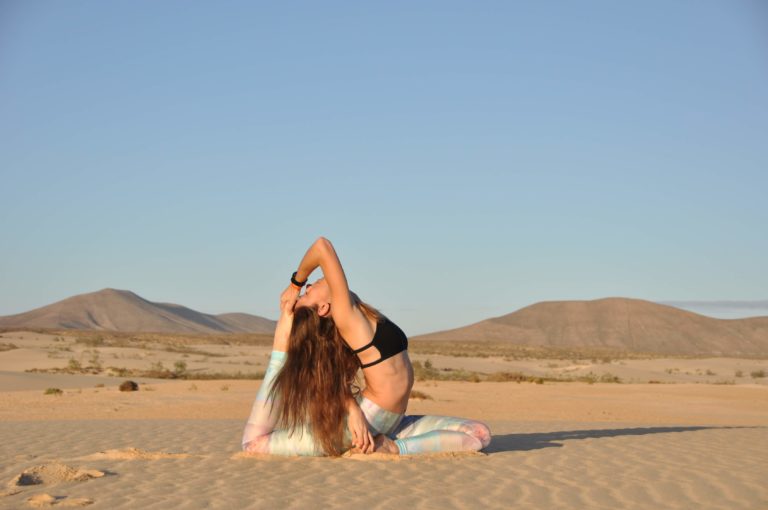
Yoga is about more than stretching and offers numerous health benefits. A regular practice can change your life.
What do you imagine when you think about yoga? Many people imagine a room full of bendy women in trendy skintight pants stretching. Is this yoga?
The answer is yes and no. What’s important to understand is yoga is so much more, and crucially, it can benefit everyone, regardless of age, shape, size or ability. You don’t have to be a gymnast to practice yoga.
Sports Tracker Ambassador and adventure junky Sònia Colomo is a certified yoga teacher offering classes in Barcelona. She began learning yoga four years ago when she was living in Australia and catching waves everyday.
“Yoga helped me to live more in the present moment, to think twice before doing things and to accept myself more,” Sònia says. “Yoga has taught me that when your mind is at peace, your whole body is at peace too, and things flow easier.”

Hold up, what is yoga anyway?
Yoga is many different things to different groups. Yoga is a Sanskrit word that is a cognate of the English word “yoke”, as in to yoke a horse to its carriage. The word points to a startling array of mind and body practices that began emerging in India thousands of years ago.
Many different religions, philosophical schools, people and groups, within India, but also in Tibet and elsewhere, have developed their own practices over the centuries and referred to them as yoga. More recently, from about the 19th century, people in India and beyond developed a more physical exercise style of practice they call yoga.
Modern postural yoga
In his classic book, Yoga Body, scholar of yoga Dr Mark Singleton refers to the mainstream form of yoga, which most of us associate yoga with today, as “modern postural yoga”. This is helpful because it is more specific, clarifying what form of yoga we are talking about, since there are so many forms.
Modern postural yoga emphasises physical postures and exercises, rather than other techniques and practices emphasised by other groups. Modern postural yoga isn’t necessarily always a purely physical practice. It often includes breathing exercises, meditation, and mindfulness techniques. But these orbit the postural practice.
This version of yoga has become a global phenomenon, with an industry earning billions of dollars. There are yoga studios all over the world where people practice together, and an estimated 300 million yoga practitioners around the world.
Isn’t it just a fancy form of stretching?
No. That’s the easy answer. Improving flexibility is only one aim of postural yoga. Improving mobility (the range of motion of the joints) is another. Developing muscular strength, fascial health, gracefulness, proprioception (the ability to sense the position of the body in space) and interoception (the ability to sense the internal state of the body) are just as, if not more, important than flexibility.
So don’t worry if you think of yourself as not being flexible. The degree of flexibility in your body is a complex topic, and not an obstacle to practicing yoga.

Styles of modern postural yoga
There are many different styles out there. Ashtanga and Iyengar are two of the earliest forms of modern postural yoga. Here some key categories:
Vinyasa flow: a style of yoga characterized by linking one posture to the next so you flow from one to another, without any breakage, matching inhalations and exhalations to the movements. It’s a physically demanding style.
Hatha yoga: a generic style of yoga that often involves holding postures for longer than vinyasa, rather than always flowing, and breathing exercises referred to as “pranayama”.
Power yoga: a more athletic, vigorous form of dynamic physical practice, designed to build strength.
Mindfulness yoga: a style of yoga that focuses on cultivating mindfulness. It is usually slower and more gentle than other forms of postural yoga.
Restorative yoga: a style that is dedicated to rest and recovery. Passive postures are held for much longer than usual, and props such as bolsters and blankets are used to make people more comfortable.
Yin yoga: a passive style that also involves holding postures for longer than usual, but not as long as restorative yoga.
What style is for me?
Many people who practice yoga do a variety of all of the above styles. There is a time and place for each of them. If you are super exhausted, for example, then restorative yoga will help you recuperate. If you have tons of energy and feel like a challenge, a vinyasa flow class can be a blast. If your mind is super busy, considering quieting down with a mindfulness yoga class.
The benefits of a regular yoga practice
There are dozens of peer reviewed scientific studies that indicate the health benefits of a regular yoga practice. In fact, the list of benefits is too long to cover in full here. For easy scrolling, here’s a short list.
Physical benefits of yoga
- increased flexibility and mobility
- increased muscle strength and tone
- improved respiration, energy and vitality
- maintaining a balanced metabolism
- weight reduction
- cardio and circulatory health
- improved athletic performance
- protection from injury
Mental benefits of yoga
- increases relaxation
- improves mental clarity
- reduces stress
- improves body and self awareness
How to get started with yoga
Ask around and try to get a recommendation for a good yoga studio or teacher. Depending on your fitness level, it might be good to try a gentler style of yoga before moving on to the more demanding forms.
Mindfulness is really central to yoga so consider taking a mindfulness yoga class first to fully explore this. This will serve you later if you try the more vigorous styles.
“If you’re about to enroll in a yoga class, you’ll probably start working more on the physical part of yoga and that’s a great start because you will improve your overall fitness and you will start to feel better,” Sònia says. “Don’t worry about your flexibility, if you can breathe, you can practice yoga!”
Making yoga a life practice
To really benefit from yoga it’s good to make it a regular practice, rather than a once-in-a-while kind of thing. It’s good to do yoga three or four times a week, even if each session is only 20 to 30 minutes.
Attending classes or getting one-on-one training are great ways to start, and once you have learned the basics you can develop a home practice. This is where the magic really happens. Before you know it you’ll feel like a new person.
“I really enjoy seeing the positive changes that people experience with a regular practice,” Sònia says. “It’s great to see them improving not only physically, but also in dealing with stress, in managing their daily life better, in taking more care of their health and wellness and in loving themselves more.
“A regular yoga practice has helped me to deal with stress and bring me back to a state of calm.”
Josh Gale
Kiwi journalist tracking adventures great and small
Jorge David Rivera
Hola quisiera saber que aplicacion me aconsejan descargar en mi tl ceular para la practica de yoga en casa agradezco sus consejos
Sports Tracker
Hi.
You can use for example Sports Tracker app & Suunto 3 watch (to track your heart rate).
https://www.suunto.com/es-es/Productos/Relojes-deportivos/suunto-3-fitness/suunto-3-fitness-all-black/